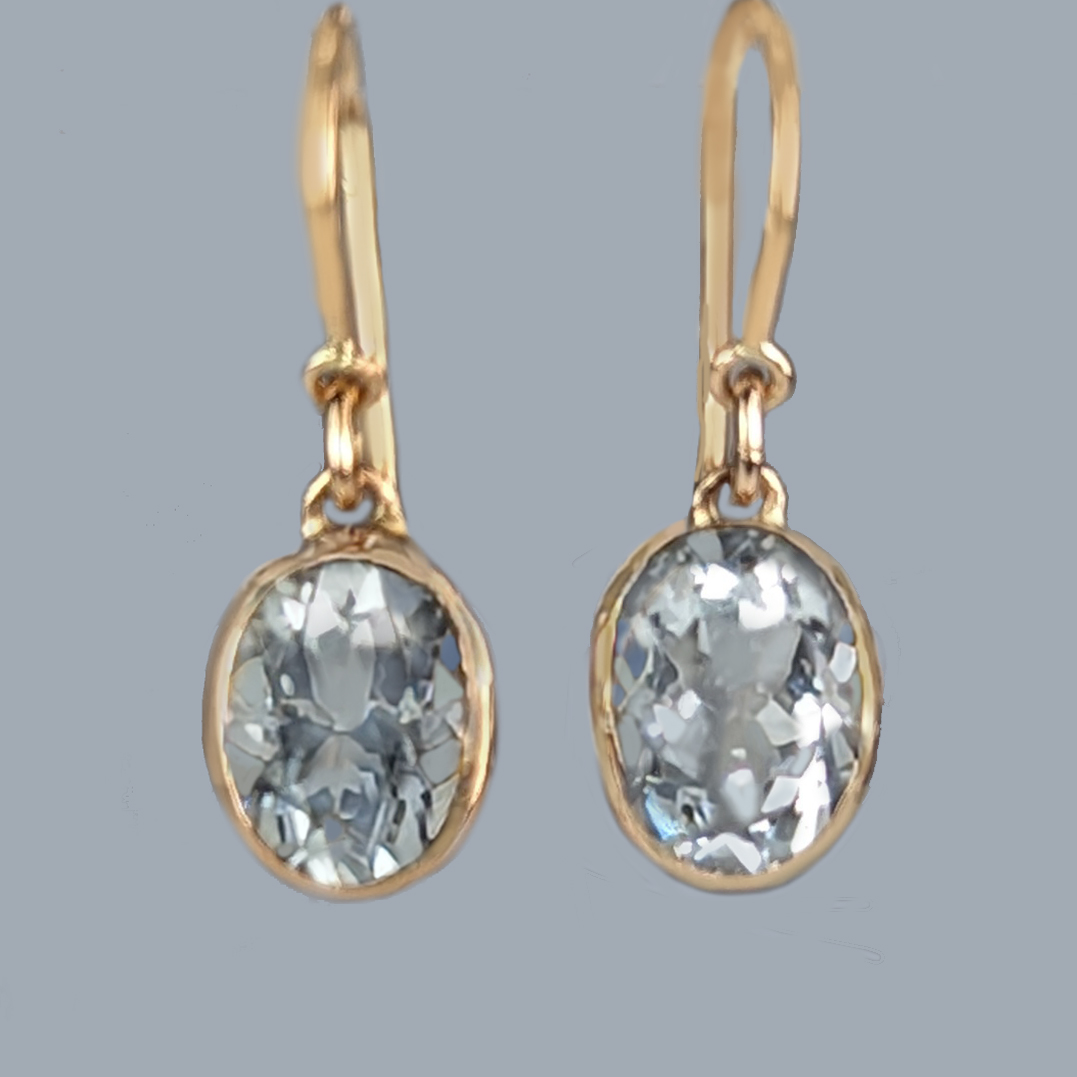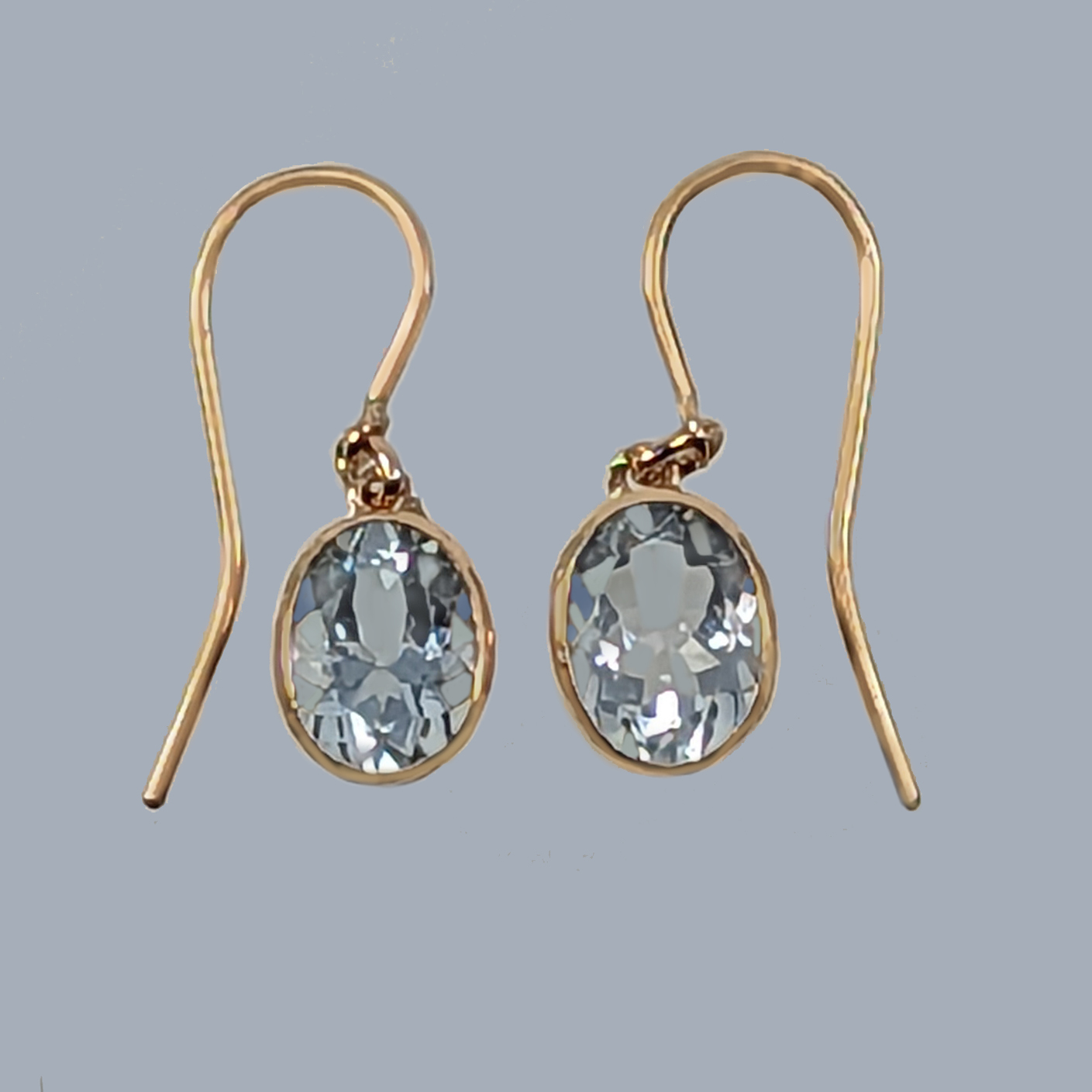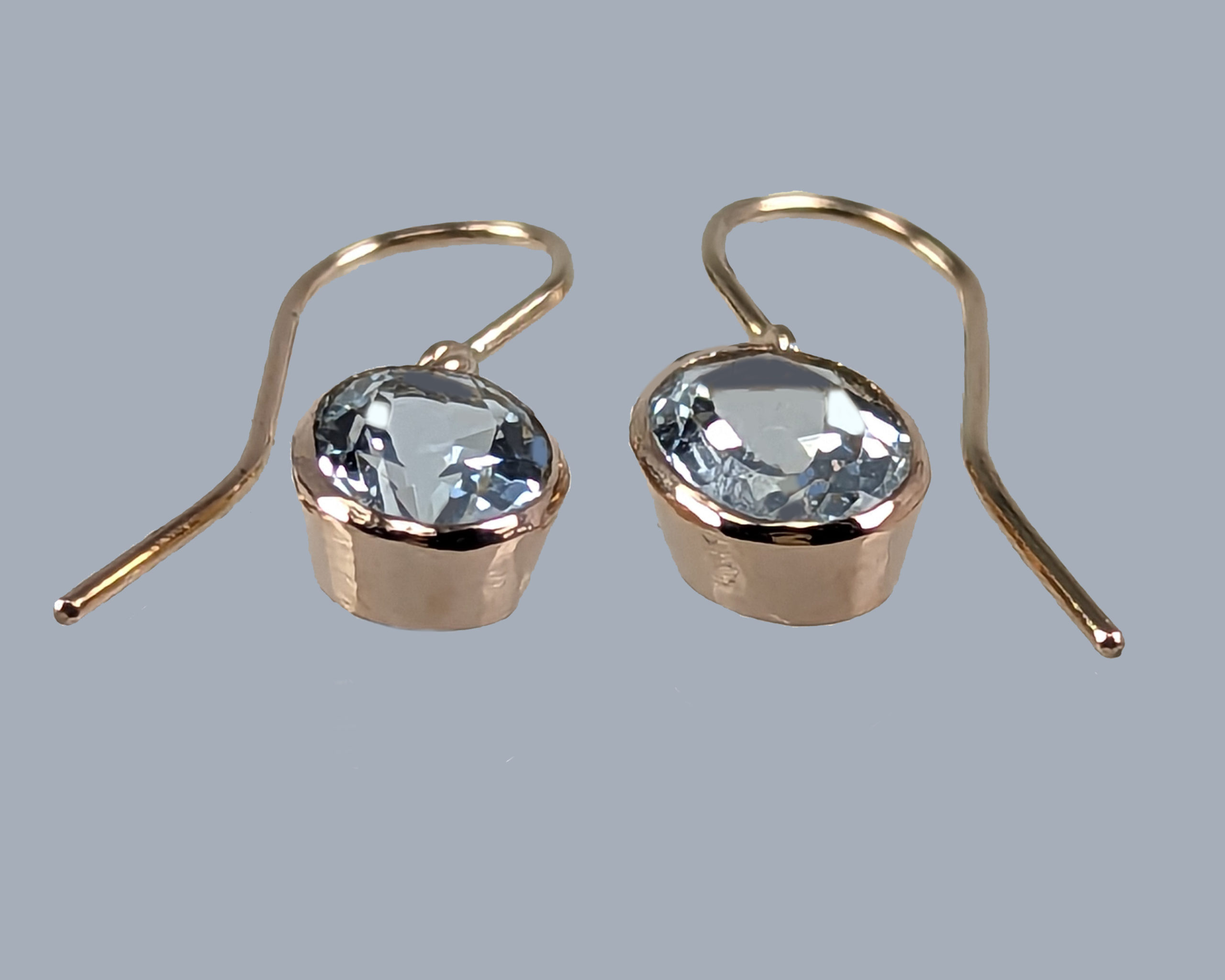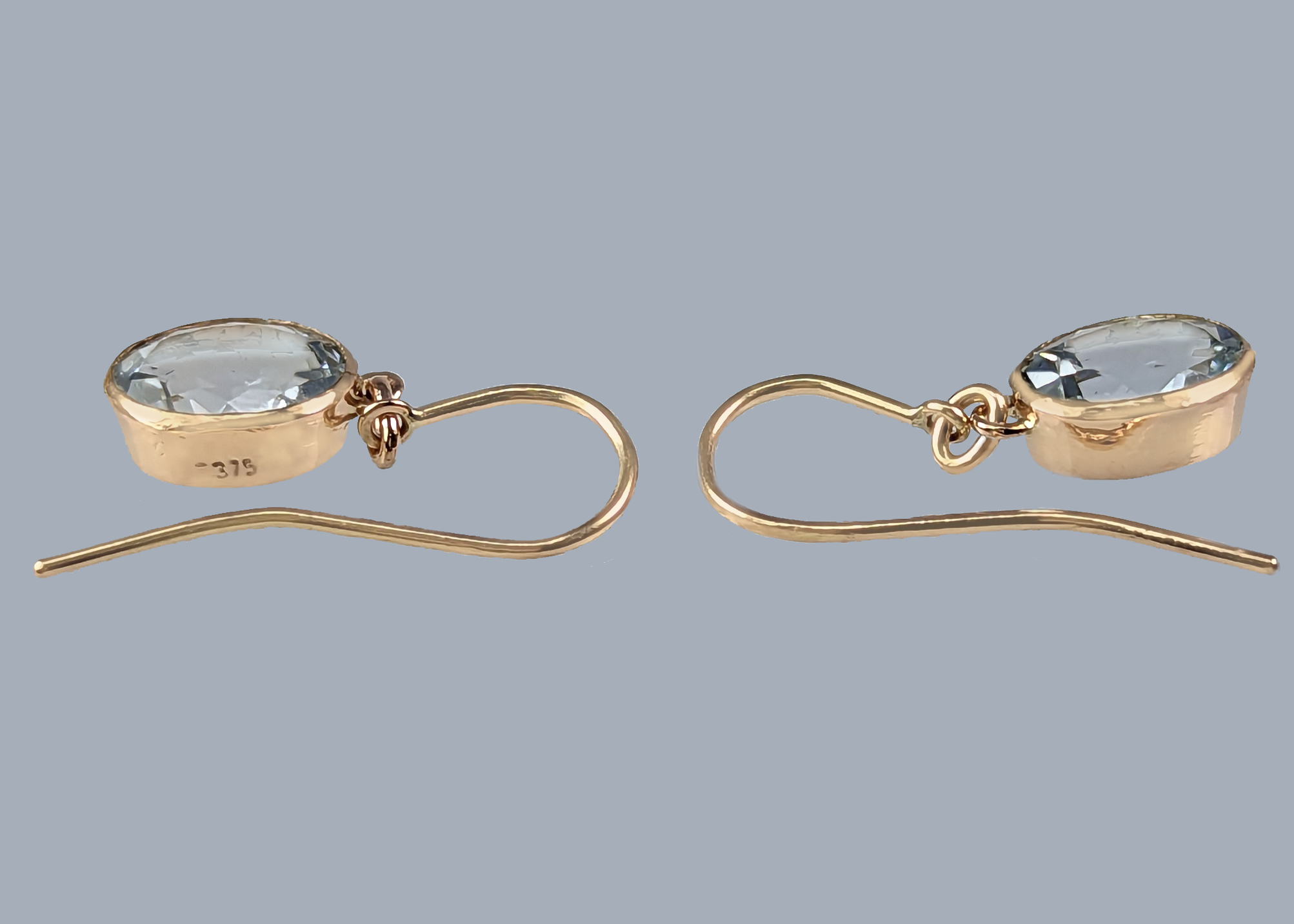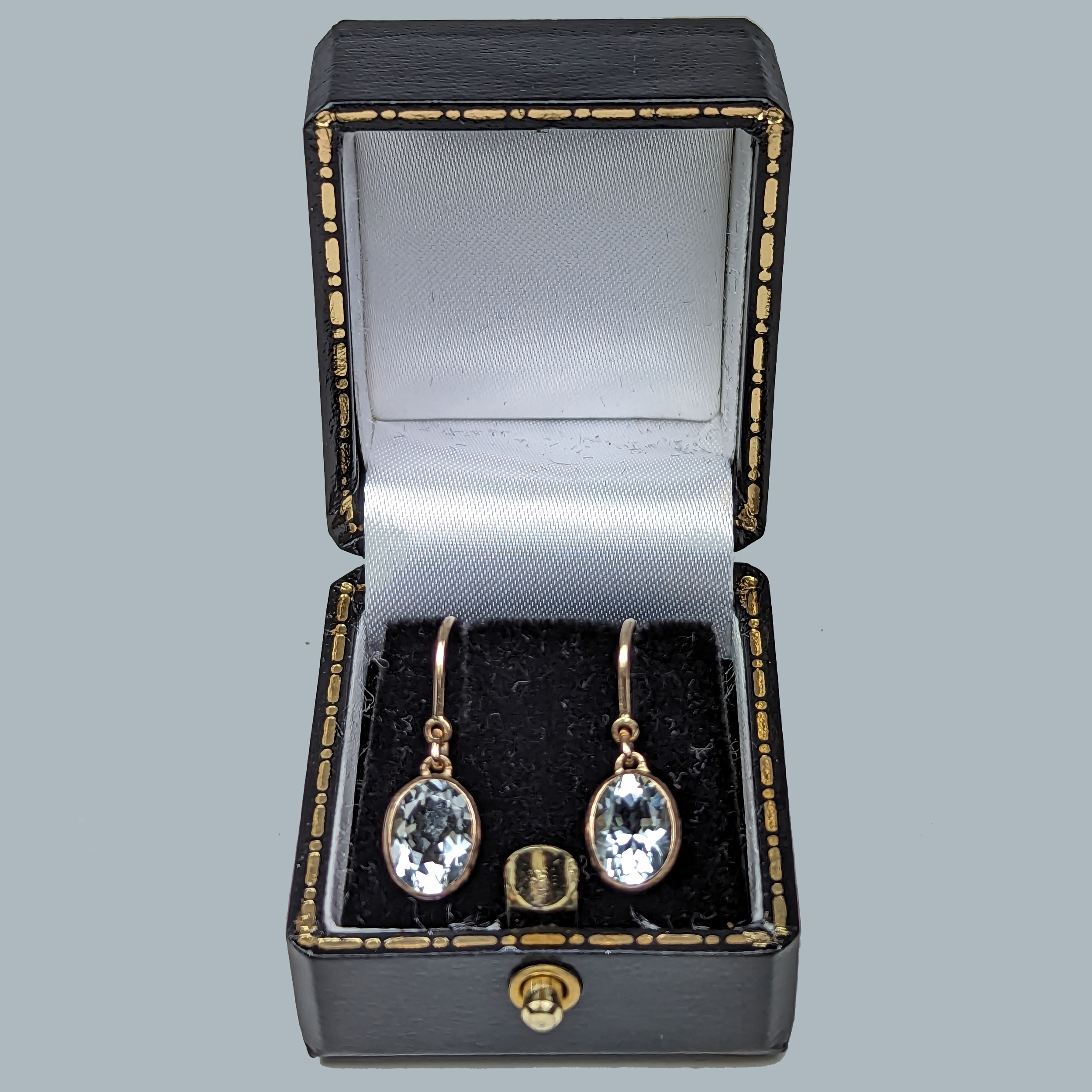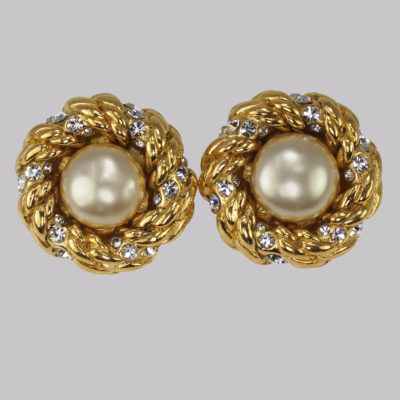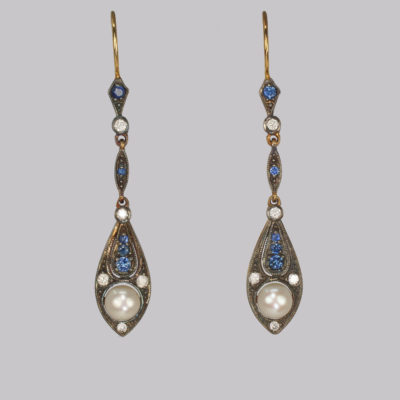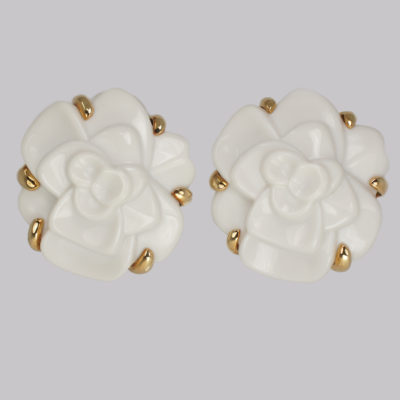Description
Gorgeous 9ct gold aquamarine earrings
These vintage earrings are each set with a beautiful clear blue aquamarine
The aquamarines are bezel set in 9ct gold with 9 ct gold shepherds hooks
These fabulous earrings look so pretty when worn
- 2cm ( 0.8″ ) long from the top of the shepherds hook
- Aquamarines 9 mm and 7mm
- Marked 9ct gold (375)
- With 9ct gold shepherds hooks
- They date to around 1960
- They are in excellent condition
- Weight 1.5 grams
- They come in the presentation box illustrated
- Our Ref: 23222
View more beautiful vintage earrings
Aquamarine
This is the pale blue transparent variety of beryl. Aquamarine was a perfect stone for the early 20th century light and feminine jewellery, Edwardian, Belle Epoque, accompanied by diamonds and swag chains and bows. Early aquamarine jewellery was often silver foil backed. During the 20th century it became more and more common to heat treat the stones to increase the colour and not use silver foil. This soon led to the use of large bold stones being used in Art Deco jewellery. Aquamarine remained a popular gem and in the 1950s featured prominently in bold Retro pieces. Aquamarine is widely distributed throughout the world with Brazil having some of the finest pieces. It can easily be confused with blue topaz and synthetic blue spinel. Aquamarine jewellery became very popular in the early 20th century. It was often set with diamonds in white gold or platinum. During the Art Deco period highly stylish aquamarine avant-gard dangle drop earrings were the rage, notably by Cartier and Raymond Templier Also large stones were used in very bling pendant necklaces and sautoirs, In the 1930s Luis Sanz of Madrid produced fabulous diamond and aquamarine riviere necklaces and dangle drop earring suites.
Peridot
In the past peridot was called olivine. It is often mis-identified as chrysolite, a yellow – green chrysoberyl. The finest peridot is a deep apple green colour and was first found on the Isle of St John in the Red Sea. Peridot has been used in jewellery at least since the Roman times. Most peridot available today is of Victorian extraction or later. In the 1700s peridot was used to decorate fob chain ornaments and objects of virtue. In the early and mid-Victorian times ladies wore complete parures, tiara, necklace, earrings, brooch, bracelets, and ring. At the end of the 19th century peridot found favour in 9ct and 15ct open work pendants, often in the presence of pearls.


